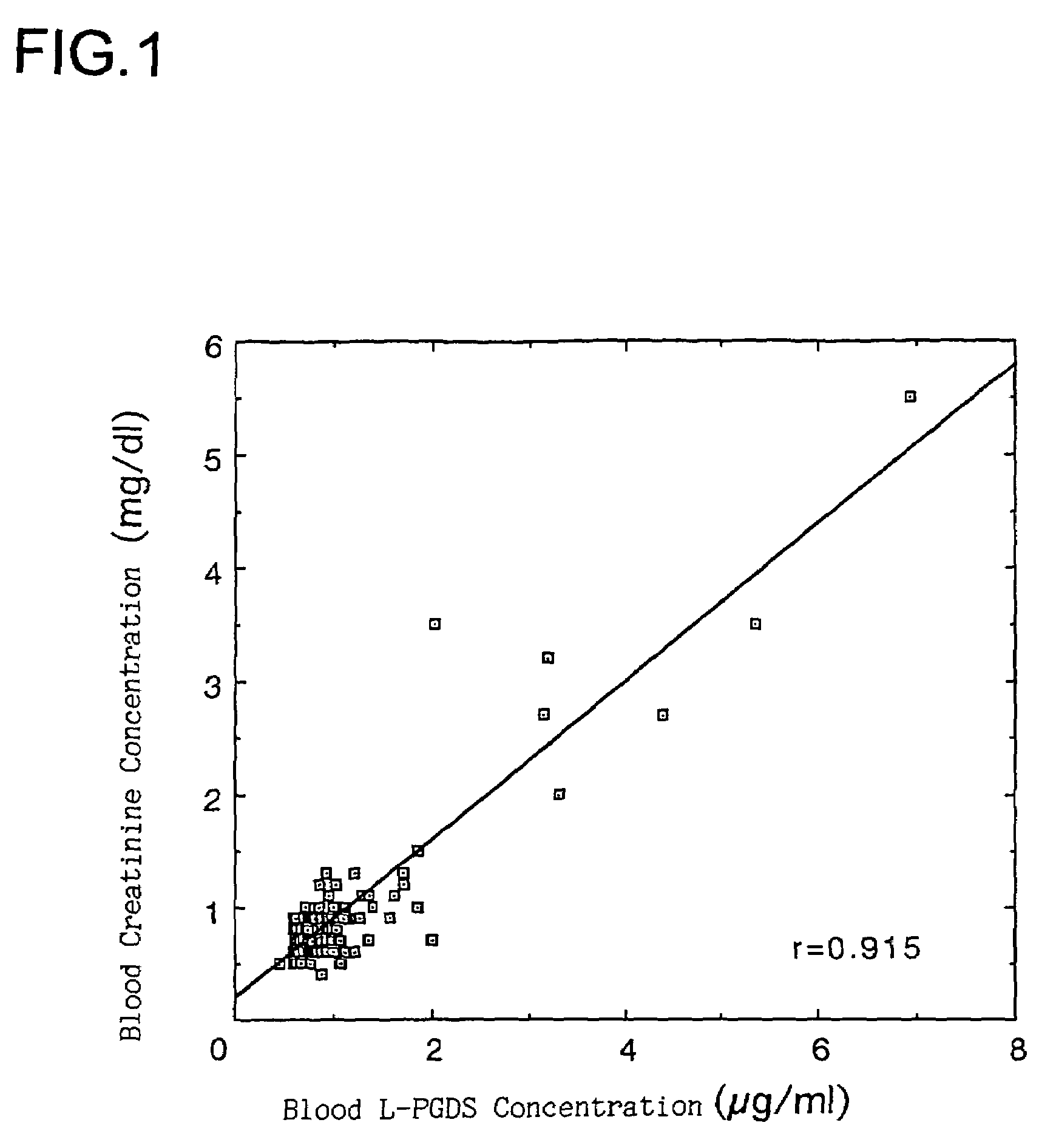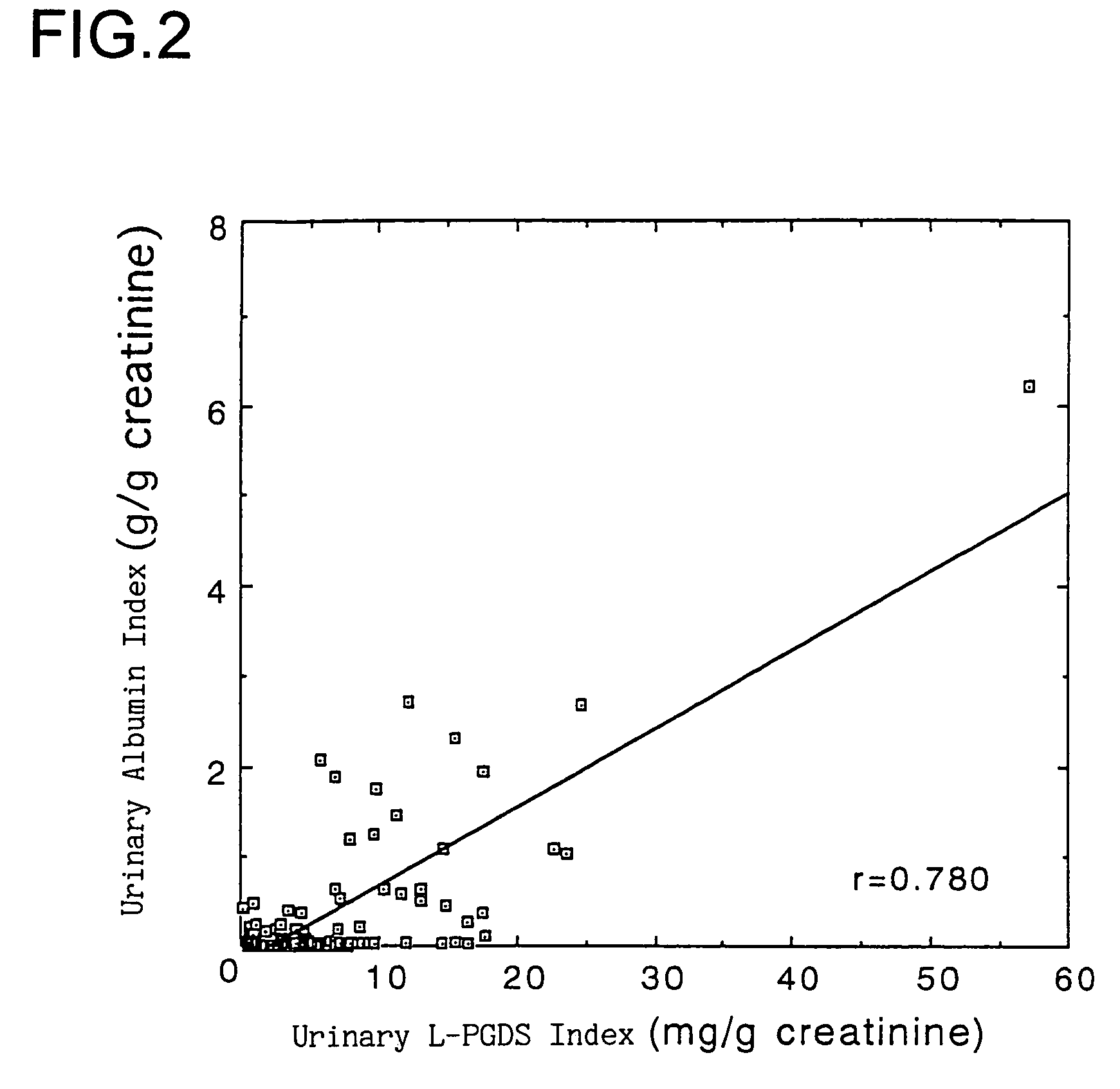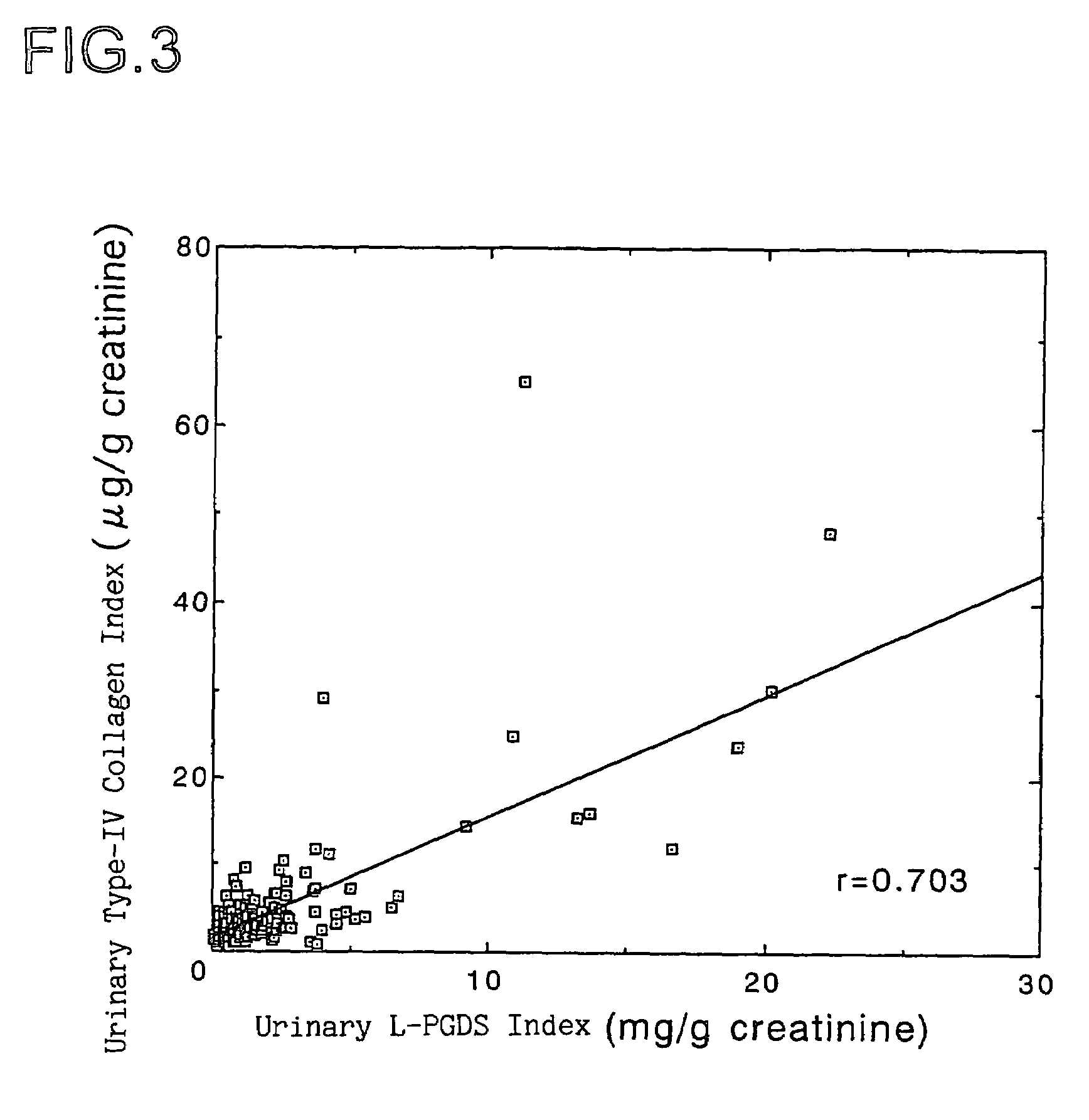Method of detection and disease state management for renal diseases
a technology for detecting renal diseases and managing disease state, applied in the field of detecting renal diseases, can solve the problems of limited application of clearance tests, increased or lowered blood pressure, infections or shunt troubles, etc., and achieve the effect of evaluating glomerular filtration ability in a short time and without imposing a big burden on subjects
- Summary
- Abstract
- Description
- Claims
- Application Information
AI Technical Summary
Benefits of technology
Problems solved by technology
Method used
Image
Examples
reference example 1
Determination of Serum and Urinary L-PGDS Concentrations in Healthy Persons and the Setting of Reference Values
[0037]Using blood (serum) samples and spotted urine samples taken from healthy subjects, L-PGDS concentrations in these body fluid samples were determined by sandwich ELISA to set reference values.
(1) Preparation of A Standard Curve
[0038]First, an anti-L-PGDS monoclonal antibody (clone: 7F5) which can bind to L-PGDS was diluted with 50 mM carbonate buffer (pH 9.6) to give a concentration of 4.4 μg / ml. Then, this diluted antibody was added to a 96-well microtiter plate at 300 μl / well and left overnight at 4° C. to thereby immobilize the antibody on the plate. This plate was washed with phosphate buffered saline (pH 7.4; hereinafter called “PBS”) three times. Thereafter, 0.2% casein-containing PBS (pH 7.4; hereinafter called the “blocking solution”) was added to the plate at 300 μl / well and incubated at 30° C. for 90 min for blocking.
[0039]Subsequently, the plate after blocki...
example 1
Correlation Between L-PGDS and Serum Creatinine / Urinary Albumin / Urinary Collagen IV
[0044]Serum L-PGDS concentration, serum creatinine concentration, urinary L-PGDS index and urinary albumin index were determined on 118 internal medicine outpatients. Also, urinary L-PGDS index and urinary type-IV collagen index were determined on 284 internal medicine outpatients.
[0045]As shown discretely in FIGS. 1 to 3, a high correlation was found between serum L-PGDS concentration and serum creatinine concentration, between urinary L-PGDS index and urinary albumin index and between urinary L-PGDS index and urinary type-IV collagen index. Therefore, it has become evident that L-PGDS can be an indicator of renal diseases which is comparable to serum creatinine, urinary albumin and urinary type-IV collagen used so far.
example 2
Changes in L-PGDS Concentrations in Patients with Various Renal Diseases
[0046]Serum L-PGDS concentration and urinary L-PGDS index were determined on 42 patients with renal diseases (chronic renal failure: 11 patients; glomerulonephritis: 23 patients; polycystic kidney: 8 patients). At the same time, serum creatinine concentration and urinary albumin index were determined. The results are shown in FIG. 4.
[0047]As shown in FIG. 4, it has become clear that in all of the renal diseases tested, serum L-PGDS concentration and urinary L-PGDS index increase significantly compared to those values in healthy subjects. Serum creatinine concentration and urinary albumin index also increased in those renal diseases. However, comparing the p values (levels of significance), L-PGDS showed smaller p values. Therefore, we can say that L-PGDS can be an indicator of renal diseases superior to serum creatinine and urinary albumin.
PUM
| Property | Measurement | Unit |
|---|---|---|
| concentration | aaaaa | aaaaa |
| concentration | aaaaa | aaaaa |
| concentration | aaaaa | aaaaa |
Abstract
Description
Claims
Application Information
 Login to View More
Login to View More - R&D
- Intellectual Property
- Life Sciences
- Materials
- Tech Scout
- Unparalleled Data Quality
- Higher Quality Content
- 60% Fewer Hallucinations
Browse by: Latest US Patents, China's latest patents, Technical Efficacy Thesaurus, Application Domain, Technology Topic, Popular Technical Reports.
© 2025 PatSnap. All rights reserved.Legal|Privacy policy|Modern Slavery Act Transparency Statement|Sitemap|About US| Contact US: help@patsnap.com



